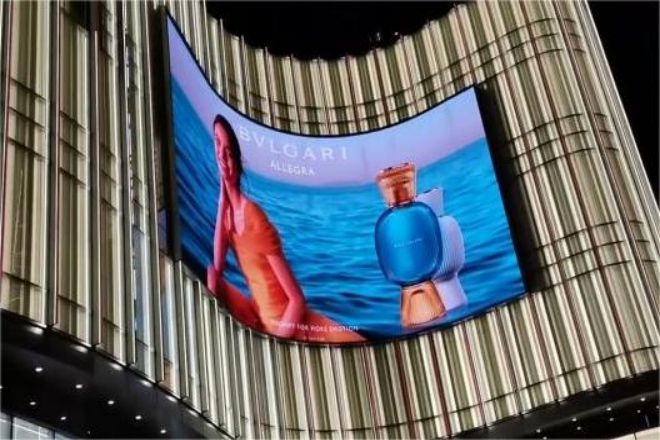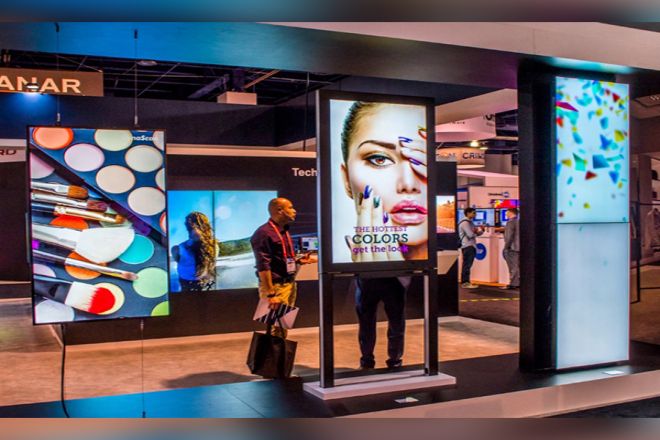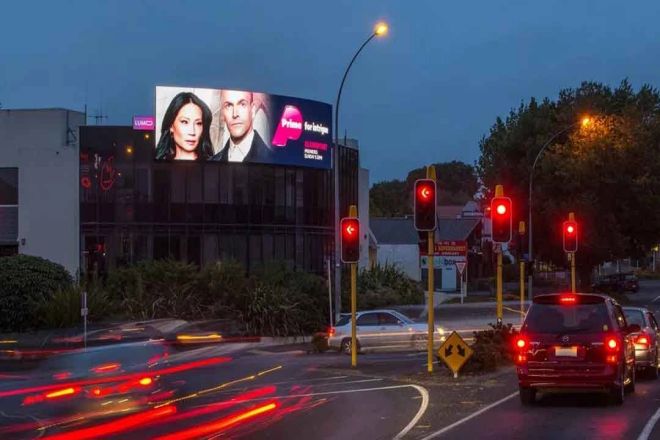مقدمة

مع التطور السريع للعلوم والتكنولوجيا وتسارع التحضر، شاشات اعلانية خارجية LED أصبحت الشاشات الرقمية جزءًا لا غنى عنه من المشهد الحضري. بفضل سطوعها العالي ودقتها العالية وخصائصها المتعددة الوظائف، توفر منصة فعالة للإعلان التجاري ونقل المعلومات والدعاية العامة.
ومع ذلك، مع تعميم واستخدام شاشات الإعلانات الخارجية LED، قدمت البلدان اللوائح والمعايير ذات الصلة لضمان سلامتها وحماية البيئة والامتثال لمتطلبات الجمال الحضري.
1. نظرة عامة على متطلبات استيراد شاشات الإعلانات الخارجية LED في مختلف البلدان
1) الشهادات والمعايير
- معايير الاعتماد الدولية المشتركة:
في عملية استيراد شاشات الإعلان LED الخارجية، تشمل معايير الشهادة الدولية الشائعة CE (شهادة السلامة الأوروبية)، وFCC (شهادة لجنة الاتصالات الفيدرالية الأمريكية)، وRoHS (توجيه تقييد المواد الخطرة)، وما إلى ذلك. تركز هذه المعايير بشكل أساسي على سلامة المنتج، والتوافق الكهرومغناطيسي، وحماية البيئة، وجوانب أخرى.
- التقديم والمتطلبات:
عند استيراد شاشات الإعلانات LED، عادة ما تطلب الدول من المنتجات تلبية معايير الشهادات الدولية المقابلة. على سبيل المثال، يجب على المنتجات التي تدخل السوق الأوروبية الحصول على شهادة CE لضمان تلبية المنتجات للمتطلبات الأساسية للسلامة والصحة وحماية البيئة الأوروبية، وما إلى ذلك.
يجب أن تلبي المنتجات التي تدخل السوق الأمريكية متطلبات التوافق الكهرومغناطيسي التي حددتها لجنة الاتصالات الفيدرالية. بالإضافة إلى ذلك، تتطلب توجيهات RoHS أن يكون محتوى المواد الضارة في المنتجات أقل من المعايير المحددة لحماية البيئة وصحة الإنسان.
- متطلبات السلامة وحماية البيئة:
بالإضافة إلى تلبية معايير الشهادات الدولية، طرحت البلدان أيضًا متطلبات محددة للسلامة وحماية البيئة لشاشات الإعلانات LED المستوردة. على سبيل المثال، يجب أن تتمتع المنتجات بأداء السلامة، مثل الوقاية من الحرائق والحماية من الصواعق والعزل المائي؛ يتم استخدام مواد صديقة للبيئة في عملية التصنيع للحد من انبعاثات النفايات، وما إلى ذلك.
2) التعريفات الجمركية ومعدلات الضرائب
- سياسات التعرفة:
تختلف سياسات التعريفات الجمركية على شاشات الإعلانات الخارجية LED في مختلف البلدان. وقد تتبنى بعض البلدان معدلات ضريبية أقل لتعزيز التجارة الدولية والتبادل التكنولوجي، في حين قد تتبنى بلدان أخرى معدلات ضريبية أعلى لحماية صناعاتها وأسواقها.
- معدلات الضرائب والإعفاءات الضريبية:
تختلف معدلات الضرائب على التعريفات الجمركية على الواردات وفقًا لعوامل مثل نوع المنتج والأصل واتفاقيات التجارة. قد تكون بعض البلدان قد وقعت اتفاقيات تجارية مع دول معينة وتفرض معدلات ضريبية أقل أو معدومة على شاشات الإعلانات LED من هذه البلدان. بالإضافة إلى ذلك، توفر بعض البلدان أيضًا سياسات الإعفاء الضريبي لتشجيع استيراد المنتجات التي تلبي شروطًا محددة.
- التأثير على تكاليف الاستيراد والقدرة التنافسية في السوق:
يؤثر مستوى التعريفات الجمركية على الواردات بشكل مباشر على تكلفة الاستيراد والقدرة التنافسية للمنتجات في السوق. قد تؤدي معدلات الضرائب المرتفعة إلى زيادة تكاليف الاستيراد وتقليل القدرة التنافسية للمنتجات في السوق، في حين تساعد معدلات الضرائب المنخفضة على تقليل تكاليف الاستيراد وتحسين القدرة التنافسية للمنتجات في السوق.
3) تراخيص الاستيراد والحصص
- نظام رخصة الاستيراد:
طبقت بعض الدول نظام تراخيص الاستيراد، مما يتطلب من المستوردين الحصول على تراخيص الاستيراد المناسبة قبل استيراد شاشات الإعلانات الخارجية LED. تم تصميم هذا النظام للتحكم في كمية الواردات وضمان جودة المنتج والامتثال للمتطلبات التنظيمية ذات الصلة.
- نظام الحصص:
قد تطبق بعض البلدان أيضًا نظام الحصص لشاشات الإعلانات الخارجية LED للحد من عدد المنتجات المستوردة خلال فترة زمنية معينة. وعادةً ما يتم استخدام نظام الحصص جنبًا إلى جنب مع نظام تراخيص الاستيراد للتحكم بشكل أكثر فعالية في حجم الواردات.
- القيود وطريقة التقديم:
يفرض نظام تراخيص الاستيراد والحصص قيودًا معينة على المستوردين. يتعين على المستوردين فهم المتطلبات التنظيمية ذات الصلة والالتزام بها والتقدم والموافقة وفقًا للإجراءات المقررة. قد تؤدي هذه الأنظمة إلى زيادة تكاليف التشغيل وتكاليف الوقت للمستوردين، ولكنها تساعد أيضًا في ضمان جودة المنتجات المستوردة والامتثال للمتطلبات التنظيمية ذات الصلة.
2. نظرة عامة على لوائح تركيب شاشات الإعلانات الخارجية LED في مختلف البلدان

1) التخطيط والترخيص
- عملية التخطيط:
قبل تركيب شاشات الإعلانات الخارجية LED، تتطلب البلدان عمومًا تخطيطًا تفصيليًا. يتضمن هذا عادةً تحديد موقع وحجم وسطوع وغير ذلك من المعلمات الخاصة بشاشة الإعلان، فضلاً عن تقييم تأثيرها على البيئة المحيطة والمناظر الطبيعية الحضرية وتدفق المرور.
- طلب تصريح:
قبل تركيب شاشة إعلانات LED خارجية، يجب عليك تقديم طلب الحصول على تصريح إلى الإدارات المعنية. قد تشمل هذه الإدارات التخطيط الحضري وحماية البيئة وإدارة المرور وما إلى ذلك، والتي ستوافق على الطلب وفقًا لمسؤولياتها ولوائحها الخاصة.
- وظيفة الموافقة:
يهتم قسم التخطيط الحضري بما إذا كانت شاشة الإعلان تلبي متطلبات التخطيط الحضري الشامل والمتطلبات الجمالية؛ ويقوم قسم حماية البيئة بتقييم تأثيرها على البيئة، مثل التلوث الضوئي، والتلوث الضوضائي، وما إلى ذلك؛ ويهتم قسم إدارة المرور بتأثيرها على تدفق المرور والسلامة.
2) المعايير والمواصفات الفنية
- السلامة الهيكلية:
تفرض البلدان متطلبات صارمة على السلامة الهيكلية لشاشات الإعلانات الخارجية LED، بما في ذلك مقاومة الرياح ومقاومة الزلازل ومقاومة التآكل. يجب أن يتوافق التصميم الهيكلي لشاشة الإعلان مع المعايير والمواصفات المحلية لضمان التشغيل المستقر في ظل الظروف الجوية القاسية.
- السلامة الكهربائية:
يجب أن يفي النظام الكهربائي لشاشة الإعلانات الخارجية LED أيضًا بمعايير السلامة الصارمة. وهذا يشمل مواصفات سلك الطاقة، وموقع تركيب المعدات الكهربائية، والحماية من الصواعق، وتدابير الحماية من الصدمات الكهربائية، وما إلى ذلك.
- تأثير الإضاءة:
بالإضافة إلى متطلبات السلامة والبنية، فإن تأثير الإضاءة لشاشة الإعلان هو أيضًا اعتبار مهم. قد يكون لدى البلدان متطلبات محددة لمعلمات مثل السطوع والتباين وإعادة إنتاج الألوان لضمان قدرة شاشات الإعلان على توفير تأثيرات بصرية واضحة ومريحة في الليل.
3) الصيانة والإشراف
- التفتيش الدوري:
تتطلب البلدان عادةً فحص وصيانة شاشات الإعلانات الخارجية LED بشكل منتظم. ويشمل ذلك التحقق من سلامة الهيكل، وما إذا كان النظام الكهربائي يعمل بشكل صحيح، وما إذا كان تأثير الإضاءة جيدًا.
- الإصلاح والاستبدال:
في حالة اكتشاف أي مشاكل أثناء الفحص، يلزم إصلاحها واستبدالها في الوقت المناسب. وهذا يضمن أن شاشة الإعلان يمكنها استئناف التشغيل الطبيعي بسرعة عند حدوث مشاكل، وتجنب التأثيرات السلبية على السلامة العامة وصورة المدينة.
- التدابير التنظيمية:
قد تتخذ البلدان أيضًا سلسلة من التدابير التنظيمية لضمان الامتثال لشاشات الإعلانات الخارجية LED. ويشمل ذلك عمليات التفتيش المنتظمة والتفتيش العشوائي وقبول الشكاوى العامة. وقد تخضع المخالفات لغرامات وإزالة شاشات الإعلانات وعقوبات أخرى.
ومن خلال اتباع هذه اللوائح والمعايير، يمكن للدول ضمان الالتزام بتركيب وتشغيل شاشات الإعلانات الخارجية LED مع حماية السلامة العامة وصورة المدينة.
3. تحليل حالة بلد محدد
1) متطلبات الاستيراد ولوائح التثبيت في الولايات المتحدة
- متطلبات الاستيراد:
تحتاج شاشات الإعلان LED إلى تلبية سلسلة من معايير الشهادات عند استيرادها إلى الولايات المتحدة، بما في ذلك بشكل أساسي شهادة FCC (لجنة الاتصالات الفيدرالية)، لضمان أن وظيفة الاتصال اللاسلكي للمنتج تتوافق مع لوائح التوافق الكهرومغناطيسي (EMC) وتداخل الترددات الراديوية الأمريكية.
بالإضافة إلى ذلك، يجب أن تتوافق منتجات LED أيضًا مع معايير السلامة وكفاءة الطاقة الأمريكية، مثل شهادة UL (Underwriters Laboratories) وعلامة كفاءة الطاقة ENERGY STAR.
يتعين على المستوردين تقديم فواتير تجارية مفصلة وقوائم تعبئة ومستندات شحن وما إلى ذلك، ودفع التعريفات الجمركية وضريبة القيمة المضافة على الواردات. ويمكن معرفة معدل التعريفة الجمركية من خلال الاستعلام في قاعدة بيانات لجنة التجارة الدولية بالولايات المتحدة (USITC) أو استشارة سمسار جمركي.
- قواعد التثبيت:
قبل تركيب شاشة إعلانات LED خارجية، من الضروري الحصول على إذن من إدارات مثل التخطيط الحضري وحماية البيئة وإدارة المرور. يتضمن هذا عادةً تقييم وموافقة موقع وحجم وسطوع وتأثير الشاشة الإعلانية على البيئة.
يجب أن يتوافق هيكل ونظام الكهرباء لشاشة الإعلان مع معايير السلامة الأمريكية، مثل معايير NFPA (الجمعية الوطنية للحماية من الحرائق).
بعد التثبيت، يجب فحص شاشة الإعلان وصيانتها بانتظام لضمان تشغيلها الآمن والمستقر.
- النظام التنظيمي والتنفيذ:
إن النظام التنظيمي في الولايات المتحدة مكتمل نسبيًا، حيث يتضمن لوائح مفصلة وتطبيقًا صارمًا. وقد يواجه المخالفون غرامات وإزالة شاشات الإعلانات وعقوبات أخرى.
2) متطلبات الاستيراد الأوروبية ولوائح التثبيت
- متطلبات الاستيراد:
تحتاج شاشات الإعلانات LED إلى الحصول على علامة CE (شهادة السلامة الأوروبية) لدخول السوق الأوروبية وإثبات أن المنتج يتوافق مع اللوائح والمعايير ذات الصلة بالاتحاد الأوروبي. بالإضافة إلى ذلك، يجب أن تمتثل لتوجيه RoHS للحد من استخدام المواد الخطرة في المنتجات.
يتعين على المستوردين فهم سياسة التعريفة الجمركية في الاتحاد الأوروبي والالتزام بها، بما في ذلك معدل التعريفة الجمركية للدولة الأكثر رعاية والرسوم الجمركية المضادة للإغراق المحتملة.
- قواعد التثبيت:
قد تكون للدول الأوروبية لوائحها الخاصة بشأن تركيب شاشات الإعلانات الخارجية LED، ولكنها بشكل عام تحتاج إلى الامتثال للمعايير الموحدة للاتحاد الأوروبي.
وستقوم أيضًا إدارات مثل تخطيط المدن وحماية البيئة وإدارة المرور بالموافقة والإشراف على تركيب شاشات الإعلانات.
- المعايير الموحدة والمتطلبات الخاصة:
ينسق الاتحاد الأوروبي المتطلبات التنظيمية للدول الأعضاء من خلال صياغة معايير موحدة، ولكن لا يزال بإمكان الدول الأعضاء وضع متطلبات خاصة بناءً على ظروفها. لذلك، يحتاج المستوردون إلى فهم المتطلبات المزدوجة للاتحاد الأوروبي ودوله الأعضاء والالتزام بها.
3) متطلبات الاستيراد وقواعد التثبيت في الدول الآسيوية
- الصين:
يجب أن تتوافق شاشات الإعلانات LED المستوردة مع اللوائح والمعايير الصينية ذات الصلة، مثل علامة CCC (الشهادة الإلزامية الصينية).
قبل التثبيت، من الضروري الحصول على إذن من تخطيط المدن وحماية البيئة والإدارات الأخرى، والامتثال لمعايير السلامة الكهربائية والبناء في الصين.
- اليابان:
يجب أن تتوافق شاشات الإعلانات LED المستوردة مع معايير JIS (المعايير الصناعية اليابانية) أو معايير الشهادات الدولية المقابلة.
قبل التثبيت، من الضروري الحصول على إذن من الحكومة المحلية والالتزام بلوائح البناء والكهرباء والبيئة في اليابان.
- كوريا الجنوبية:
يجب أن تتوافق شاشات الإعلانات LED المستوردة مع علامة KC (شهادة كوريا) أو معايير الشهادة الدولية المقابلة.
قبل التثبيت، من الضروري الحصول على إذن من تخطيط المدن وحماية البيئة والإدارات الأخرى، والامتثال للوائح البناء والكهرباء والبيئة في كوريا.
- الاختلافات التنظيمية والتعلم المتبادل:
تختلف الدول الآسيوية في بعض القواعد الخاصة باستيراد وتركيب شاشات الإعلانات LED، ولكن هناك أيضًا بعض القواسم المشتركة. ويمكن للدول أن تتعلم من تجارب وممارسات بعضها البعض لتحسين أنظمتها التنظيمية.
4. التحديات والتدابير المضادة

1) التحديات
- صعوبات التصديق:
تتطلب شاشات الإعلانات الخارجية LED في البلدان المختلفة متطلبات اعتماد مختلفة، ويحتاج المستوردون إلى قضاء الكثير من الوقت والموارد لفهم وتلبية معايير الاعتماد في مختلف البلدان.
على سبيل المثال، تشترط الولايات المتحدة الحصول على شهادة FCC، وتشترط أوروبا الحصول على علامة CE، وتشترط الصين الحصول على شهادة CCC. وتعتبر عمليات الحصول على هذه الشهادات معقدة وقد تتضمن اختبارات وتقييمات متعددة.
- الحواجز الجمركية:
إن سياسة التعريفات الجمركية هي أحد التحديات الحتمية في عملية الاستيراد. حيث تفرض البلدان المختلفة معدلات تعريفات جمركية مختلفة على شاشات الإعلانات الخارجية LED، وقد تكون هناك ضرائب إضافية، مثل رسوم مكافحة الإغراق. وتؤدي هذه التعريفات الجمركية إلى زيادة تكاليف الاستيراد وتقليل القدرة التنافسية للمنتجات في السوق.
- دورة موافقة طويلة:
قبل تركيب شاشات الإعلانات الخارجية LED في مختلف البلدان، يلزم إجراء سلسلة من عمليات الموافقة. وقد تشمل هذه العمليات إدارات ووكالات متعددة، مع دورات موافقة طويلة وعدم يقين. وهذا لا يزيد من الوقت والتكاليف المالية للمستوردين فحسب، بل قد يؤثر أيضًا على تقدم المشروع وفرصه في السوق.
- الاختلافات في المعايير والمواصفات الفنية:
تختلف المعايير والمواصفات الفنية لشاشات الإعلانات الخارجية LED في البلدان المختلفة، مما قد يدفع المستوردين إلى إجراء تعديلات أثناء تصميم المنتج وإنتاجه وتركيبه، مما يزيد من الصعوبة الفنية والتكلفة.
2) التدابير المضادة
- فهم المتطلبات التنظيمية للسوق المستهدفة مسبقًا:
قبل اتخاذ قرار دخول السوق، يجب على المستوردين فهم المتطلبات التنظيمية للسوق مسبقًا، بما في ذلك معايير الشهادات، وسياسات التعريفة الجمركية، وعمليات الموافقة، وما إلى ذلك. وهذا يساعد المستوردين على تلبية متطلبات السوق المستهدفة أثناء مراحل تصميم المنتج وإنتاجه، مما يقلل من صعوبة وتكلفة التعديلات اللاحقة.
- إقامة علاقات تعاونية مع الشركاء المحليين:
إن إقامة علاقات تعاونية مع الشركاء المحليين من شأنه أن يساعد المستوردين على فهم السوق المحلية والبيئة التنظيمية بشكل أفضل وتوفير المزيد من التوجيه والدعم المهني. ويمكن للشركاء المساعدة في استكمال شهادة المنتج، والتعامل مع إجراءات الاستيراد، وتنسيق عمليات الموافقة، وما إلى ذلك، للحد من مخاطر وتكاليف المستوردين.
- اطلب الدعم والمساعدة من الحكومة:
يمكن للمستوردين أن يسعوا بنشاط للحصول على الدعم والمساعدة الحكومية، مثل التقدم بطلبات للحصول على تعريفات تفضيلية بموجب اتفاقيات التجارة والمشاركة في أنشطة الترويج التجاري التي تنظمها الحكومة. تساعد هذه التدابير في تقليل الحواجز الجمركية وتحسين القدرة التنافسية للمنتجات في السوق.
- تعزيز قدرات البحث والتطوير والابتكار في مجال التكنولوجيا:
في مواجهة الاختلافات في المعايير والمواصفات الفنية في مختلف البلدان، يجب على المستوردين تعزيز قدرات البحث والتطوير والابتكار في مجال التكنولوجيا لتحسين القدرة على التكيف والمرونة للمنتجات. ومن خلال الابتكار والتحسين التكنولوجي المستمر، يمكن للمنتجات تلبية احتياجات الأسواق والعملاء المختلفة بشكل أفضل.
- إنشاء نظام جيد لخدمات ما بعد البيع:
خلال عملية بيع المنتج وتركيبه، يعد إنشاء نظام خدمة ما بعد البيع السليم أمرًا بالغ الأهمية لكسب ثقة العملاء والحفاظ على القدرة التنافسية في السوق. يجب على المستوردين تقديم خدمات الدعم الفني والصيانة في الوقت المناسب والمهنية لضمان التشغيل الطبيعي للمنتجات ورضا العملاء.
خاتمة
في سياق العولمة، لا تنطوي عملية استيراد وتركيب شاشات الإعلانات الخارجية LED على قضايا تقنية فحسب، بل تتضمن أيضًا تحديات القوانين واللوائح والاختلافات الثقافية.
إن فهم متطلبات الاستيراد ولوائح التركيب في مختلف البلدان لشاشات الإعلانات الخارجية LED والامتثال لها أمر بالغ الأهمية لضمان التقدم السلس للأنشطة التجارية وحماية حقوق المستهلك والحفاظ على صورة المدينة. في الوقت نفسه، يجب علينا أيضًا الاهتمام بالتعاون والتبادل الدوليين لتعزيز التنمية الصحية لصناعة شاشات الإعلانات الخارجية LED بشكل مشترك.
وأخيرًا، إذا كنت تريد معرفة المزيد عن شاشات العرض LED، يرجى الحصول على اتصال معنا.
